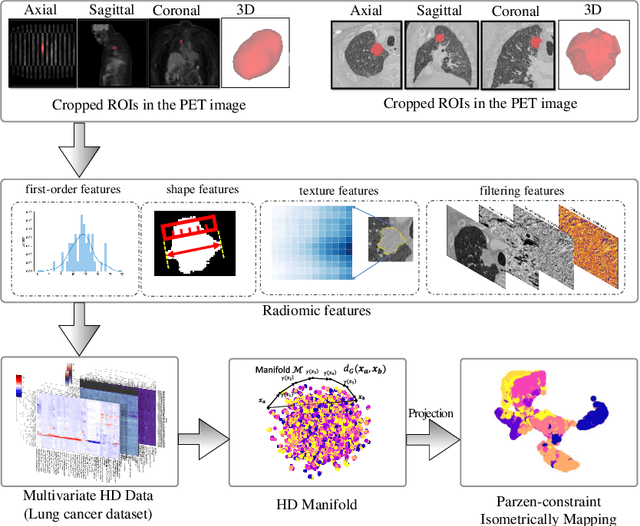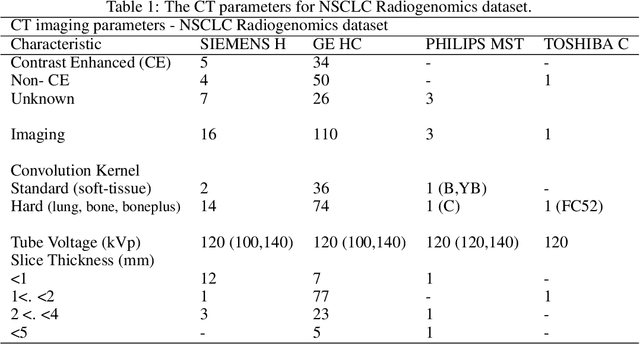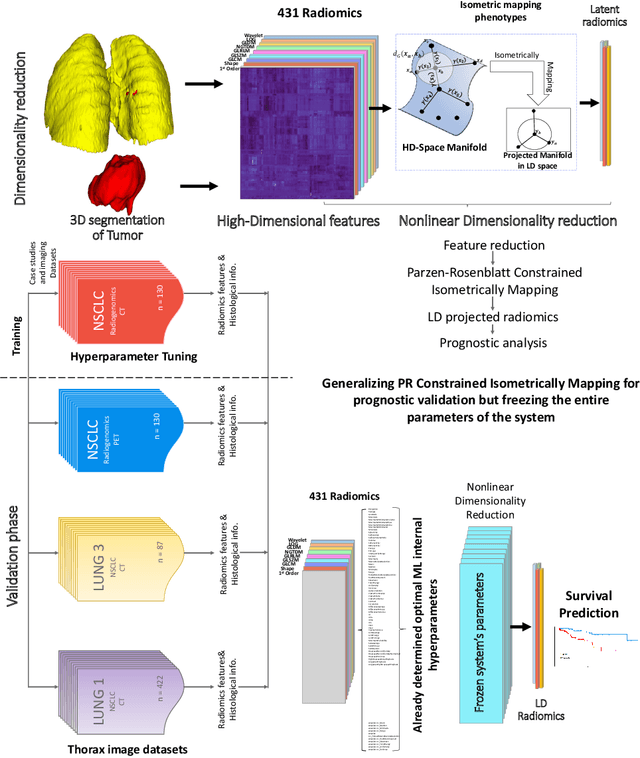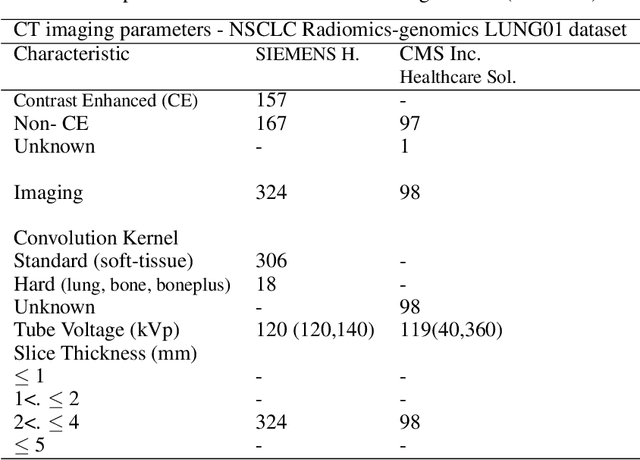Lan Ma
LLaVA-RE: Binary Image-Text Relevancy Evaluation with Multimodal Large Language Model
Aug 07, 2025Abstract:Multimodal generative AI usually involves generating image or text responses given inputs in another modality. The evaluation of image-text relevancy is essential for measuring response quality or ranking candidate responses. In particular, binary relevancy evaluation, i.e., ``Relevant'' vs. ``Not Relevant'', is a fundamental problem. However, this is a challenging task considering that texts have diverse formats and the definition of relevancy varies in different scenarios. We find that Multimodal Large Language Models (MLLMs) are an ideal choice to build such evaluators, as they can flexibly handle complex text formats and take in additional task information. In this paper, we present LLaVA-RE, a first attempt for binary image-text relevancy evaluation with MLLM. It follows the LLaVA architecture and adopts detailed task instructions and multimodal in-context samples. In addition, we propose a novel binary relevancy data set that covers various tasks. Experimental results validate the effectiveness of our framework.
A New Deep-learning-Based Approach For mRNA Optimization: High Fidelity, Computation Efficiency, and Multiple Optimization Factors
May 29, 2025Abstract:The mRNA optimization is critical for therapeutic and biotechnological applications, since sequence features directly govern protein expression levels and efficacy. However, current methods face significant challenges in simultaneously achieving three key objectives: (1) fidelity (preventing unintended amino acid changes), (2) computational efficiency (speed and scalability), and (3) the scope of optimization variables considered (multi-objective capability). Furthermore, existing methods often fall short of comprehensively incorporating the factors related to the mRNA lifecycle and translation process, including intrinsic mRNA sequence properties, secondary structure, translation elongation kinetics, and tRNA availability. To address these limitations, we introduce \textbf{RNop}, a novel deep learning-based method for mRNA optimization. We collect a large-scale dataset containing over 3 million sequences and design four specialized loss functions, the GPLoss, CAILoss, tAILoss, and MFELoss, which simultaneously enable explicit control over sequence fidelity while optimizing species-specific codon adaptation, tRNA availability, and desirable mRNA secondary structure features. Then, we demonstrate RNop's effectiveness through extensive in silico and in vivo experiments. RNop ensures high sequence fidelity, achieves significant computational throughput up to 47.32 sequences/s, and yields optimized mRNA sequences resulting in a significant increase in protein expression for functional proteins compared to controls. RNop surpasses current methodologies in both quantitative metrics and experimental validation, enlightening a new dawn for efficient and effective mRNA design. Code and models will be available at https://github.com/HudenJear/RPLoss.
Multitemporal Latent Dynamical Framework for Hyperspectral Images Unmixing
May 27, 2025Abstract:Multitemporal hyperspectral unmixing can capture dynamical evolution of materials. Despite its capability, current methods emphasize variability of endmembers while neglecting dynamics of abundances, which motivates our adoption of neural ordinary differential equations to model abundances temporally. However, this motivation is hindered by two challenges: the inherent complexity in defining, modeling and solving problem, and the absence of theoretical support. To address above challenges, in this paper, we propose a multitemporal latent dynamical (MiLD) unmixing framework by capturing dynamical evolution of materials with theoretical validation. For addressing multitemporal hyperspectral unmixing, MiLD consists of problem definition, mathematical modeling, solution algorithm and theoretical support. We formulate multitemporal unmixing problem definition by conducting ordinary differential equations and developing latent variables. We transfer multitemporal unmixing to mathematical model by dynamical discretization approaches, which describe the discreteness of observed sequence images with mathematical expansions. We propose algorithm to solve problem and capture dynamics of materials, which approximates abundance evolution by neural networks. Furthermore, we provide theoretical support by validating the crucial properties, which verifies consistency, convergence and stability theorems. The major contributions of MiLD include defining problem by ordinary differential equations, modeling problem by dynamical discretization approach, solving problem by multitemporal unmixing algorithm, and presenting theoretical support. Our experiments on both synthetic and real datasets have validated the utility of our work
AI-driven Prediction of Insulin Resistance in Normal Populations: Comparing Models and Criteria
Mar 07, 2025Abstract:Insulin resistance (IR) is a key precursor to diabetes and a significant risk factor for cardiovascular disease. Traditional IR assessment methods require multiple blood tests. We developed a simple AI model using only fasting blood glucose to predict IR in non-diabetic populations. Data from the NHANES (1999-2020) and CHARLS (2015) studies were used for model training and validation. Input features included age, gender, height, weight, blood pressure, waist circumference, and fasting blood glucose. The CatBoost algorithm achieved AUC values of 0.8596 (HOMA-IR) and 0.7777 (TyG index) in NHANES, with an external AUC of 0.7442 for TyG. For METS-IR prediction, the model achieved AUC values of 0.9731 (internal) and 0.9591 (external), with RMSE values of 3.2643 (internal) and 3.057 (external). SHAP analysis highlighted waist circumference as a key predictor of IR. This AI model offers a minimally invasive and effective tool for IR prediction, supporting early diabetes and cardiovascular disease prevention.
Acquire Precise and Comparable Fundus Image Quality Score: FTHNet and FQS Dataset
Nov 19, 2024Abstract:The retinal fundus images are utilized extensively in the diagnosis, and their quality can directly affect the diagnosis results. However, due to the insufficient dataset and algorithm application, current fundus image quality assessment (FIQA) methods are not powerful enough to meet ophthalmologists` demands. In this paper, we address the limitations of datasets and algorithms in FIQA. First, we establish a new FIQA dataset, Fundus Quality Score(FQS), which includes 2246 fundus images with two labels: a continuous Mean Opinion Score varying from 0 to 100 and a three-level quality label. Then, we propose a FIQA Transformer-based Hypernetwork (FTHNet) to solve these tasks with regression results rather than classification results in conventional FIQA works. The FTHNet is optimized for the FIQA tasks with extensive experiments. Results on our FQS dataset show that the FTHNet can give quality scores for fundus images with PLCC of 0.9423 and SRCC of 0.9488, significantly outperforming other methods with fewer parameters and less computation complexity.We successfully build a dataset and model addressing the problems of current FIQA methods. Furthermore, the model deployment experiments demonstrate its potential in automatic medical image quality control. All experiments are carried out with 10-fold cross-validation to ensure the significance of the results.
Versatile Cataract Fundus Image Restoration Model Utilizing Unpaired Cataract and High-quality Images
Nov 19, 2024



Abstract:Cataract is one of the most common blinding eye diseases and can be treated by surgery. However, because cataract patients may also suffer from other blinding eye diseases, ophthalmologists must diagnose them before surgery. The cloudy lens of cataract patients forms a hazy degeneration in the fundus images, making it challenging to observe the patient's fundus vessels, which brings difficulties to the diagnosis process. To address this issue, this paper establishes a new cataract image restoration method named Catintell. It contains a cataract image synthesizing model, Catintell-Syn, and a restoration model, Catintell-Res. Catintell-Syn uses GAN architecture with fully unsupervised data to generate paired cataract-like images with realistic style and texture rather than the conventional Gaussian degradation algorithm. Meanwhile, Catintell-Res is an image restoration network that can improve the quality of real cataract fundus images using the knowledge learned from synthetic cataract images. Extensive experiments show that Catintell-Res outperforms other cataract image restoration methods in PSNR with 39.03 and SSIM with 0.9476. Furthermore, the universal restoration ability that Catintell-Res gained from unpaired cataract images can process cataract images from various datasets. We hope the models can help ophthalmologists identify other blinding eye diseases of cataract patients and inspire more medical image restoration methods in the future.
FedRepOpt: Gradient Re-parameterized Optimizers in Federated Learning
Sep 25, 2024Abstract:Federated Learning (FL) has emerged as a privacy-preserving method for training machine learning models in a distributed manner on edge devices. However, on-device models face inherent computational power and memory limitations, potentially resulting in constrained gradient updates. As the model's size increases, the frequency of gradient updates on edge devices decreases, ultimately leading to suboptimal training outcomes during any particular FL round. This limits the feasibility of deploying advanced and large-scale models on edge devices, hindering the potential for performance enhancements. To address this issue, we propose FedRepOpt, a gradient re-parameterized optimizer for FL. The gradient re-parameterized method allows training a simple local model with a similar performance as a complex model by modifying the optimizer's gradients according to a set of model-specific hyperparameters obtained from the complex models. In this work, we focus on VGG-style and Ghost-style models in the FL environment. Extensive experiments demonstrate that models using FedRepOpt obtain a significant boost in performance of 16.7% and 11.4% compared to the RepGhost-style and RepVGG-style networks, while also demonstrating a faster convergence time of 11.7% and 57.4% compared to their complex structure.
TabKANet: Tabular Data Modelling with Kolmogorov-Arnold Network and Transformer
Sep 13, 2024



Abstract:Tabular data is the most common type of data in real-life scenarios. In this study, we propose a method based on the TabKANet architecture, which utilizes the Kolmogorov-Arnold network to encode numerical features and merge them with categorical features, enabling unified modeling of tabular data on the Transformer architecture. This model demonstrates outstanding performance in six widely used binary classification tasks, suggesting that TabKANet has the potential to become a standard approach for tabular modeling, surpassing traditional neural networks. Furthermore, this research reveals the significant advantages of the Kolmogorov-Arnold network in encoding numerical features. The code of our work is available at https://github.com/tsinghuamedgao20/TabKANet.
Density-based Isometric Mapping
Mar 04, 2024



Abstract:The isometric mapping method employs the shortest path algorithm to estimate the Euclidean distance between points on High dimensional (HD) manifolds. This may not be sufficient for weakly uniformed HD data as it could lead to overestimating distances between far neighboring points, resulting in inconsistencies between the intrinsic (local) and extrinsic (global) distances during the projection. To address this issue, we modify the shortest path algorithm by adding a novel constraint inspired by the Parzen-Rosenblatt (PR) window, which helps to maintain the uniformity of the constructed shortest-path graph in Isomap. Multiple imaging datasets overall of 72,236 cases, 70,000 MINST data, 1596 from multiple Chest-XRay pneumonia datasets, and three NSCLC CT/PET datasets with a total of 640 lung cancer patients, were used to benchmark and validate PR-Isomap. 431 imaging biomarkers were extracted from each modality. Our results indicate that PR-Isomap projects HD attributes into a lower-dimensional (LD) space while preserving information, visualized by the MNIST dataset indicating the maintaining local and global distances. PR-Isomap achieved the highest comparative accuracies of 80.9% (STD:5.8) for pneumonia and 78.5% (STD:4.4), 88.4% (STD:1.4), and 61.4% (STD:11.4) for three NSCLC datasets, with a confidence interval of 95% for outcome prediction. Similarly, the multivariate Cox model showed higher overall survival, measured with c-statistics and log-likelihood test, of PR-Isomap compared to other dimensionality reduction methods. Kaplan Meier survival curve also signifies the notable ability of PR-Isomap to distinguish between high-risk and low-risk patients using multimodal imaging biomarkers preserving HD imaging characteristics for precision medicine.
RS-DPO: A Hybrid Rejection Sampling and Direct Preference Optimization Method for Alignment of Large Language Models
Feb 15, 2024Abstract:Reinforcement learning from human feedback (RLHF) has been extensively employed to align large language models with user intent. However, proximal policy optimization (PPO) based RLHF is occasionally unstable requiring significant hyperparameter finetuning, and computationally expensive to maximize the estimated reward during alignment. Recently, direct preference optimization (DPO) is proposed to address those challenges. However, DPO relies on contrastive responses generated from human annotator and alternative LLM, instead of the policy model, limiting the effectiveness of the RLHF. In this paper, we addresses both challenges by systematically combining rejection sampling (RS) and DPO. Our proposed method, RS-DPO, initiates with the development of a supervised fine-tuned policy model (SFT). A varied set of k responses per prompt are sampled directly from the SFT model. RS-DPO identifies pairs of contrastive samples based on their reward distribution. Finally, we apply DPO with the contrastive samples to align the model to human preference. Our experiments indicate that our proposed method effectively fine-tunes LLMs with limited resource environments, leading to improved alignment with user intent. Furthermore, it outperforms existing methods, including RS, PPO, and DPO.
 Add to Chrome
Add to Chrome Add to Firefox
Add to Firefox Add to Edge
Add to Edge